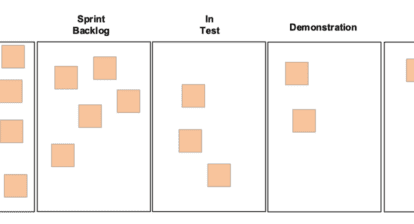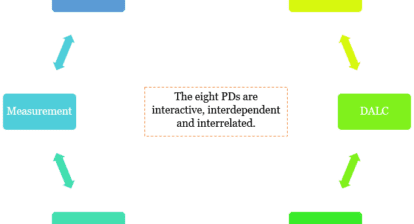 Have you read Stephen Covey’s 7 Habits of Highly Effective People? This blockbuster book has transformed millions of lives. A critical component of the message is habit. Regularly repeated behavior. Effectiveness is a result of doing the right things consistently.
Have you read Stephen Covey’s 7 Habits of Highly Effective People? This blockbuster book has transformed millions of lives. A critical component of the message is habit. Regularly repeated behavior. Effectiveness is a result of doing the right things consistently.
Consistency is also a theme in continuous process improvement and project management maturity models. If our project teams have good habits — consistency — we score higher on PM maturity scales and, more importantly, we have better project performance.
Watch Eric Verzuh on-demand for “Microsoft Project + SharePoint = PM Maturity,” to learn more about how easy it can be to use Microsoft Project and SharePoint for basic project management activities. The focus is on “easy,” because if it isn’t easy, people often won’t develop the basic habits. And if they won’t do the basics, it doesn’t matter what other features a tool may have.
This message is easy to understand, but it isn’t a quick fix or silver bullet because developing new (good) habits isn’t easy. (Yes, bad habits seem only too easy to acquire!) One thing we can do to encourage our teams to have good project management habits is to make it easier for them to do the right thing. We see it all the time in the training we deliver for our clients. At the end of a project management class people are excited to apply what they’ve learned, and they are convinced that the concepts and techniques will make them more effective. But if it isn’t easy to start these new habits, they put it off, returning to their previous habits.
So how do we make it easier? Make the tools friendly!
Nobody starts out to write software that is hard to use, but somehow a lot of the project management software turned out that way. Why is that? Because project management is a big topic and these tools can do so much for us. But the more they can do for us, the less we want to use them because it takes too much effort to learn it all and too much time to keep the data up to date.
The second thing we can do is to take it easy on ourselves — start out with simpler goals and trust that we’ll get better over time. In fact, all maturity models rely on that principle: Focus on building one good habit at a time.
My company, The Versatile Company, works with a lot of organizations that want to get better at project management; so how do we apply this thinking? Be clear about the most important factors that drive project success, prioritize them, and do one thing at a time. Focus on building good habits in this order:
1 Have a clear goal that management, the customer and the team all agree on. (You’ll notice that this does NOT require Microsoft Project.) This is all about project approval and initiation. Just by making sure that there is absolute agreement on the business value, scope and time and cost constraints, many firms take a huge stride forward. Importantly, it is the people who select and approve projects that need to develop this habit.
2 Have a plan that shows the schedule, with clear accountability and that is used to measure progress. Notice this habit is focused on the schedule only. Make sure there is a realistic schedule, and use it to keep people focused on forward progress. Here’s where the tools come in. Microsoft Project is a powerful tool that can do far more than simply create and update a schedule. But that is the place to start. At Versatile, we actually modify the Project interface so that new users only see the features that focus on building the schedule. That makes it MUCH easier to develop the habit of planning and updating the schedule on a regular basis.
3 Conduct status meetings on a regular basis and use an agenda to keep them focused and valuable. This is the opportunity to build the habits related to productive meetings.
4 Manage issues and risks. This is the habit of keeping track of the details of current problems and proactively solving potential problems. If you’ve developed the habit of conducting effective meetings, this habit will fit neatly into your agenda.
I’ll stop here. Yes, there are a host of other good practices for project managers and teams, but for those that are trying to develop good PM habits, get control of these first. And the right tools will make it easier. We think SharePoint is an under-appreciated tool for building good project management habits. Over 70 percent of the people who attend our free monthly webinars report that their organization owns SharePoint. But only 20 percent realize it is easy to use for keeping track of the schedule, issues, risks and for running a focused a meeting.
Build good project management habits, one at a time, leveraging the Microsoft products that your organization already owns.









Roland Hoelscher
Nice article; good points well presented.